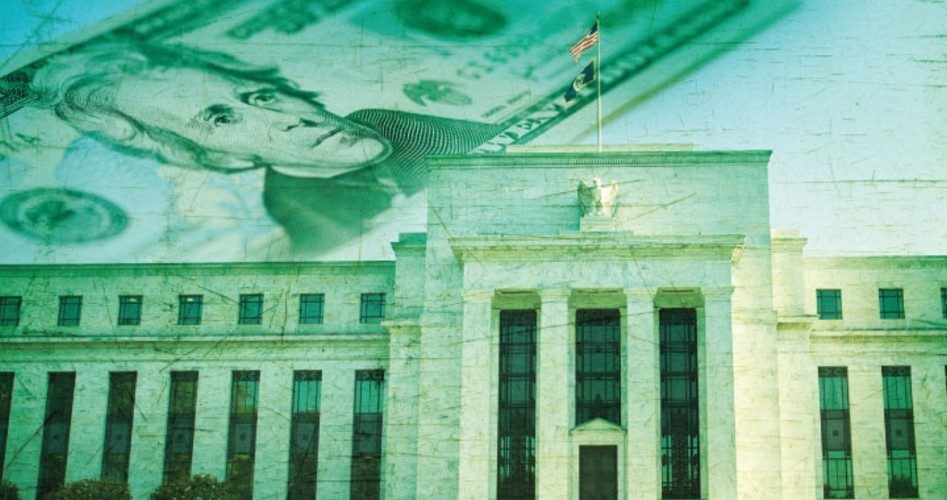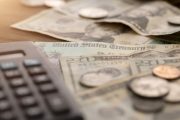
The Senate had still not acted on President Obama’s nomination of Janet Yellen to succeed Ben Bernanke as chairman of the Federal Reserve Board when rumors began appearing in print over whom the president would nominate to succeed Yellen as the Fed’s vice chairman. A New York Times headline on December 12 heralded the likely coming of Stanley Fischer, a “Central Banker in the Bernanke Mold.” Or perhaps Bernanke has all along been in the Fischer mold, since, as the Times story relates, Fischer taught Bernanke and other prominent bankers and economists when he was a professor of economics at the Massachusetts Institute of Technology. Bernanke has cited Fischer as one of his most important mentors.
Fischer, should he be chosen and confirmed, could easily accommodate himself to the programs and policies of the current board. He is already on board with the “quantitative easing” program that has the Fed buying $85 billion of bonds a month to stimulate the economy, a practice that Fischer, an adventurous sort, has called both “dangerous” and “necessary.” He was vice chairman at Citigroup between 2002 and 2005, a period in which the company’s expansion, as the Times put it, “eventually ended in a federal bailout.” Born in Rhodesia (now Zambia) in 1943, Fischer, 70, holds both U.S. and Israeli citizenship and has experience of global reach, having worked for both the World Bank and the International Monetary Fund before becoming governor of the Bank of Israel. Fischer, like Yellen, is a member of the Council on Foreign Relations, the American branch of an international society dedicated to the eventual creation of a one-world government.
A polished practitioner of the “dismal science,” he has mastered the economist’s art of making himself obscure in his speeches and writings. In that regard at least, he may be “in the mold” of former Fed Chairman Alan Greenspan, whose skill at obfuscation has drawn comparisons to Hubert Humphrey and Casey Stengel. (“If you understood what I said,” Greenspan once told a senator, “I must have misspoken.”) Fischer, no slouch at rendering the mundane obscure, is famous for writing sentences such as the following: “This paper is concerned with the role of monetary policy in affecting real output and argues that activist monetary policy can affect the short-run behavior of real output, rational expectations notwithstanding.”
The Times’ Binyamin Appelbaum, supplying a helpful translation, wrote: “Central banks in other words have the power to stimulate economic activity. Monetary policy can help countries to recover from recessions.” That, indeed, is the policy and goal Chairman Bernanke has been pursuing, “rational expectations notwithstanding.”
Quantitative Uneasiness
Writing on Forbes.com on November 29, economic analyst Perianne Boring noted “a curious inconsistency” on the part of the three Republicans who voted to confirm Yellen when her nomination for Fed chairman was before the Senate Banking Committee. (The committee voted 14-8 in favor of confirmation.) All three issued statements later saying they opposed the Fed’s quantitative easing policy. Yet Yellen made clear in her testimony to the same committee a week earlier that she supports the policy and plans to continue it. Sen. Joe Manchin of West Virginia, the only Democrat on the committee to vote against the nomination, said he did so because of “her views and beliefs to continue quantitative easing despite the failure to see any real gains…. You can’t spend your way to prosperity and borrow your way out of debt.”
Boring also noted the similarity between the Fed’s “QE” policy and the banking practices that led to the financial crisis and collapse of 2007-08:
This program has been conducted with virtually no oversight or transparency, so we don’t know the exact details, but the Fed is purchasing about $480 billion a year in mortgaged-backed securities directly from the big banks and putting the taxpayer on the hook for them. Excessive exposure to mortgage-backed securities is what had some banks in trouble in 2008, but given the Fed’s lack of transparency, it’s not clear how risky its purchases are.
Oversight and transparency are precisely what the Federal Reserve does not want, which is why it has opposed legislation former Rep. Ron Paul (R-Texas) promoted to have the Fed audited by the Government Accountability Office. The bill finally passed the House in 2012, but the Senate did not act on it.
Some aspects of Federal Reserve operations have been regularly audited by the GAO. But the three areas where the law currently does not allow auditing are the swap lines the Fed arranges with other central banks and international financing organizations, deliberations and decisions of monetary policy (i.e., how much to raise and lower interest rates), and purchase and sale of securities made under the Federal Open Market Committee’s direction. Bernanke has argued that audits of those activities would threaten the board’s independence.
“Because GAO reviews may be initiated at the request of members of Congress,” the Fed chairman told the House Financial Services Committee in 2009, “reviews or the threat of reviews in those areas could be seen as efforts to influence monetary decisions.”
Or they might be seen as evidence of how impervious the Fed is to any influence by Congress over how many federal dollars it spends or where it spends them. In 2008, for example, Congress authorized the spending of $700 billion to bail out failed U.S. financial institutions under the Troubled Assets Relief Program. Yet a GAO audit of the Fed’s TARP purchases showed $16.2 trillion — an amount greater than the U.S. annual Gross Domestic Product — spent in bailing out banks in the United States, the United Kingdom, Germany, and Switzerland.
The “Dual Mandate”
Created by an act of Congress in December 1913, the Federal Reserve was up and running by the middle of the following year, just before the outbreak of war in Europe. The money supply, and consequently consumer prices, doubled during the war to facilitate the financing of the war efforts of the Allies and, eventually, our own. While the United States was officially neutral, U.S. banks lent billions to England and France, creating a powerful vested interest in the United States in a victory by the Allies. U.S. entry into the war in 1917 helped to ensure that outcome. While leading bankers and arms manufacturers made vast fortunes, the burdens of the war were borne by soldiers on Europe’s battlefields and by consumers facing higher prices for the necessities of life. Woodrow Wilson’s “war to end all wars” was made possible by the vast expansion of the nation’s money supply.
“For those who believe the U.S. entry into World War I was one of the most disastrous events for the U.S. and for Europe in the 20th century,” wrote economist Murray Rothbard, “the facilitating of the U.S. entry into the war is scarcely a major point in favor of the Federal Reserve.”
Yet the Fed did, indeed, have its reputation enhanced by the war, as economist and author Lester Chandler noted: “A grateful nation now hailed it as a major contributor to winning the war, an efficient fiscal agent for the Treasury, a great source of currency and reserve funds, and a permanent and indispensable part of the banking system.”
The Fed still has its original mandate to preserve the value of the U.S. dollar. Its success in that mission can be measured by the fact that it would take 23 of today’s U.S. dollars to buy what one dollar bought in 1913. Nevertheless, Congress in 1977 created what is often described as the “dual mandate” by adding job creation to the Fed’s responsibilities. Members of Congress might have intended that the currency being protected or the jobs created would be the U.S. dollar and American jobs. But the Fed has a long history of acting in ways contrary to that mission, “rational expectations notwithstanding.”
The London Loyalty
England after World War I was beset with inflation, the inevitable offspring of war. Inflation had weakened the American currency as well, but not nearly as much as it had devastated the British pound. And the stockpile of gold in the United States was still large and growing. The higher prices of British goods made them less competitive than American products in world markets. As the pound weakened, the prices people in the United Kingdom had to pay for imported goods got higher, while the prices received for their exports went down. The banking powers of both countries devised a cure for Britain’s affliction, and it would come at the expense of American consumers.
Benjamin Strong, head of the Federal Reserve Bank of New York, held frequent meetings throughout the 1920s with Montagu Norman, governor of the Bank of England. The Bank of England provided Strong with a private office and a secretary during his frequent visits to London. The heads of the central banks of France and Germany were sometimes included in the meetings, which Norman’s biographer, John Hargrave, described as “more secret than any ever held by Royal Arch Masons or by any Rosicrucian Order.”
On July 1, 1927, the British ship Mauretania docked in New York, with two significant passengers aboard. Montagu Norman was accompanied by Hjalmar Schacht, head of the German Reichsbank. “The secrecy of the meeting,” wrote economist and historian John Kenneth Galbraith, “was extreme and to a degree ostentatious. The names of neither of the great bankers appeared on the passenger list. Neither on arriving met with the press.”
They were joined in New York by Charles Rist, the deputy governor of the Banque de France. All three went into conference with Strong to discuss the weak reserve position of the Bank of England. As Galbraith related:
This the bankers thought could be helped if the Federal Reserve System would ease interest rates, encourage lending. Holders of gold would then seek higher returns from keeping their metal in London. And, in time, the higher prices in the United States would ease the competitive position of British industry and labor.
Simply put, the Fed would engender inflation in the United States to make American-made products less competitive in world markets than England’s. And by lowering interest rates, the central bank was encouraging investors to borrow money here at a low rate and invest it where it would bring a higher return. U.S. dollars and gold would flow to London.
“The purpose of inviting the Germans and French to the meeting was to enlist their agreement to create inflation in their countries as well,” wrote G. Edward Griffin in The Creature From Jekyll Island. “Schacht and Rist would have no part of it and left the meeting early, leaving Strong and Norman to work out the final details between them.”
The New York bank was the key member of the Federal Reserve System, due to the presence there of so many of the nation’s leading financiers. The most powerful of all bankers was J.P. Morgan, Jr., whose financial empire was rooted in London. His family business had been saved by the Bank of England. He insisted that his junior partners demonstrate a “loyalty to England.” Morgan was also a leading light in the Council on Foreign Relations. And Benjamin Strong was very much a Morgan man, having been head of Morgan’s Banker’s Trust Company and one of the half-dozen men at the secret meeting at Jekyll Island where the plans for the creation of the Federal Reserve were hatched.
That Strong was instrumental in carrying forth a plan to bail out England at America’s expense is hardly surprising. As Rothbard put it: “In short, the American public was nominated to suffer the burdens of inflation and subsequent collapse in order to maintain the British government and the British trade union movement in the style to which they insisted on becoming accustomed.”
Before he served on the board of the J.P. Morgan Company and later became chairman of the Federal Reserve, Alan Greenspan was an unabashed champion of the gold standard and a frequent critic of central bank policies. In 1966, he wrote about the Fed’s contribution to the stock market crash of 1929 and the depression that followed.
When business in the United States underwent a mild contraction in 1927, the Federal Reserve created more paper reserves in the hope of forestalling any possible bank reserve shortage. More disastrous, however, was the Federal Reserve’s attempt to assist Great Britain who had been losing gold to us…. The “Fed” succeeded; it stopped the gold loss, but it nearly destroyed the economies of the world in the process. The excess credit which the Fed pumped into the economy spilled over into the stock market — triggering a fantastic speculative boom…. As a result, the American economy collapsed.
Arming Germany Between the Wars
As the depression deepened, according to liberal mythology, President Herbert Hoover clung foolishly and desperately to free market policies until Franklin Roosevelt came in and saved the nation with the New Deal. In fact, as Griffin pointed out, “Herbert Hoover launched a multitude of government programs to bolster wage rates, prevent prices from dropping, prop up failing firms, stimulate construction, guarantee home loans, protect the depositors, rescue the banks, subsidize the farmers, and provide public works.” Roosevelt’s New Deal brought more of the same. The Fed attempted to “prime the pump” with fresh infusions of new dollars, but an economy burdened by new bureaucracies and more regulations, subsidies, and taxes remained in a drought. It was not until the end of the 1930s and the outbreak of another war in Europe that American industry geared up for wartime production and the depression came to an end.
The Fed’s expansion of the money supply between the two world wars resulted in at least one significant accomplishment, however. It made possible massive loans to nations unable to pay them back. The restructuring of Germany’s WWI reparation payments under the Dawes Plan of 1924 had opened up new opportunities for American bankers. In 1931, a consortium of American banks, worried about their investments in Germany, persuaded the German government to accept a loan of nearly $500 million to prevent a default. American dollars continued to flow into Germany after Hitler’s National Socialist Party came into power. New formulas contrived at debt conferences in Berlin made it easier for German companies to borrow from American banks. On behalf of its banker clients, Sullivan and Cromwell, the largest U.S. law firm, floated the first American bonds issued by the giant German steelmaker Krupp, A.G. When Germany defaulted on its debts midway through the decade, American investors lost billions.
One aspect of the New Deal that has been largely forgotten in our time is that one of President Roosevelt’s first acts in 1933 was to ban the private possession of gold. Paper dollars were no longer redeemable in gold, and what gold people possessed was contraband, with the legal requirement that it be exchanged for paper money. The ban was not lifted until January 1, 1975, by which point paper dollars had been devalued to the point where few Americans had enough of them to buy an appreciable amount of gold. Besides, after more than 40 years of its prohibition, people were used to the banishment of gold and had come to think of money only as the Federal Reserve Notes, backed only by the “full faith and credit of the United States.”
Toward a New World Currency
Near the end of World War II, 730 delegates from 44 nations spent three weeks in July 1944 at the United Nations Monetary and Financial Conference held in Bretton Woods, New Hampshire. The financiers and politicians at the conference agreed to rules and procedures to regulate the international monetary system and created two new UN agencies: the International Monetary Fund and the International Bank for Reconstruction and Development, now part of the World Bank. The delegates also agreed to maintain a unified exchange rate by tying their currencies to the U.S. dollar.
The agreement became the first step in an ongoing effort to create a single currency for a one-world government. The IMF and World Bank, James Perloff wrote in The Shadows of Power, were proposed years earlier by the Economic and Finance Group of the Council on Foreign Relations. Perloff noted British author A.K. Chesterton’s observation that the new agencies “were not incubated by hard-pressed Government engaged in waging war, but by a Supra-national Money Power which could afford to look ahead to the shaping of a post-war world that would serve its interests.” Socialist economist John Maynard Keynes of England, a leading figure at the conference, proposed a world currency, but the idea was rejected at the time.
On August 15, 1971, President Richard Nixon closed “the gold window” to the world, declaring that foreign-held U.S. dollars would no longer be redeemable in gold. That made the dollar fully a “fiat currency” and effectively ended the system created at Bretton Woods. But a single world currency has remained a long-term goal of world economic planners. Johannes Witteveen, a former head of the International Monetary Fund, said in 1975 that the IMF should become “the exclusive issuer of official international reserve assets.” In the Fall 1984 issue of the CFR’s flagship publication, Foreign Affairs, Richard N. Cooper wrote:
A new Bretton Woods conference is wholly premature. But it is not premature to begin thinking about how we would like international monetary agreements to evolve in the remainder of this century. With this in mind, I suggest a radical alternative scheme for the next century: the creation of a common currency for all the industrial democracies, with a common monetary policy and a joint Bank of Issue to determine that monetary policy…. How can independent states accomplish that? They need to turn over the determination of monetary policy to a supranational body. [Emphasis in original.]
Cooper, who had been under secretary of state for economic affairs in the Carter administration, acknowledged that the American public would not likely accept the idea that countries with oppressive autocratic regimes should have a hand in determining monetary conditions in the United States. But perhaps over time, Americans could overcome their aversion to autocracy and oppression. “For such a bold step to work at all,” he wrote, “it presupposes a convergence of values.”
The idea of a one-world currency was even endorsed in the 1980s by conservative icon Ronald Reagan. At an economic summit in Williamsburg, Virginia, in 1983, Reagan declared: “National economies need monetary coordination mechanisms, and that is why an integrated world economy needs a common monetary standard…. But no national currency will do — only a world currency will work.”
An essential feature of national sovereignty is the ability of a nation to control its own currency. A world currency would strike at the heart of that sovereignty, as the member-states of the European Union must know and as former Federal Reserve Board Governor Mariner Eccles said long ago: “An international currency is synonymous with international government.”
In 1939, a prominent American lawyer and a founding member of the Council on Foreign Relations called for the “establishment of a common money” that would “deprive our government of exclusive control over a national money…. The United States must be prepared to make sacrifices afterward in setting up a world politico-economic order that would level off inequalities of economic opportunity with respect to nations.”
Looking at that statement, one might think it came from a flaming liberal, if not a flat-out Marxist. Yet it was spoken by a man who became known as a fire-breathing anti-communist during his tenure as secretary of state in the 1950s, none other than John Foster Dulles.
CFR member Zbigniew Brzezinski, who would become national security advisor to CFR member and U.S. President Jimmy Carter, wrote in 1970: “More intensive efforts to shape a new world monetary structure will have to be undertaken, with some consequent risk to the present relatively favorable American position.”
The “Convergence of Values”
Perhaps the “convergence of values” hoped for by Cooper was at work in the upper echelons of American government and finance through much of the Cold War when giant strides were taken to reduce, if not eliminate, that “relatively favorable American position” that Brzezinski found expendable. As Griffin observed in The Creature From Jekyll Island, “Almost every important facet of Eastern-Bloc heavy industry could well be stamped ‘Made in the U.S.A.’” Two of the world’s largest truck plants for example, the Kama River and Zil plants, were turning out trucks, armored personnel carriers, and missile carriers in the Soviet Union during the Vietnam War. Forty-five percent of the money for the project came in the form of a loan from the U.S. Export-Import bank, an agency of the federal government. Another 45 percent came from David Rockefeller’s Chase Manhattan Bank, leaving only 10 percent to be financed by the Soviets themselves. The Export-Import Bank at the time was under the direction of William Casey. “Casey later was appointed head of the C.I.A. to protect America from global Communism,” Griffin wryly observed.
Lending to the Enemy
In his book The Best Enemy Money Can Buy, economist and historian Antony Sutton pointed out that weapons and transportation systems used to kill Americans in Korea and Vietnam were built with loans, subsidies, and technology transfers from the United States. Addressing the graduating class at Annapolis in 1983, John Lehman, then secretary of the Navy, said: “Within weeks many of you will be looking across just hundreds of feet of water at some of the most modern technology ever invented in America. Unfortunately, it is on Soviet ships.”
Today the U.S. fighting men are facing Taliban fighters armed with weapons supplied by the United States when the Taliban were fighting the Soviet Union. As our nation spends as much or nearly as much on its military as the rest of the world’s nations combined, the continued expansion of the money supply by the Federal Reserve makes it possible for the United States to continue to maintain bases and military commitments around the globe, ostensibly to keep America and our allies safe. Yet there is also a growing awareness of the threat to our nation’s economy from a national debt of roughly $17 trillion. Two years ago, Admiral Mike Mullen, chairman of the Joint Chiefs of Staff, acknowledged that threat. “I’ve said many times that I believe the single, biggest threat to our national security is our debt, so I also believe we have every responsibility to help eliminate that,” Mullen said.
It remains to be seen if the American people will be sufficiently aroused to eliminate that threat before the bankers and planners of the new world order eliminate our nation’s sovereignty.
This article is an example of the exclusive content that’s only available by subscribing to our print magazine. Twice a month get in-depth features covering the political gamut: education, candidate profiles, immigration, healthcare, foreign policy, guns, etc. Digital as well as print options are available!



